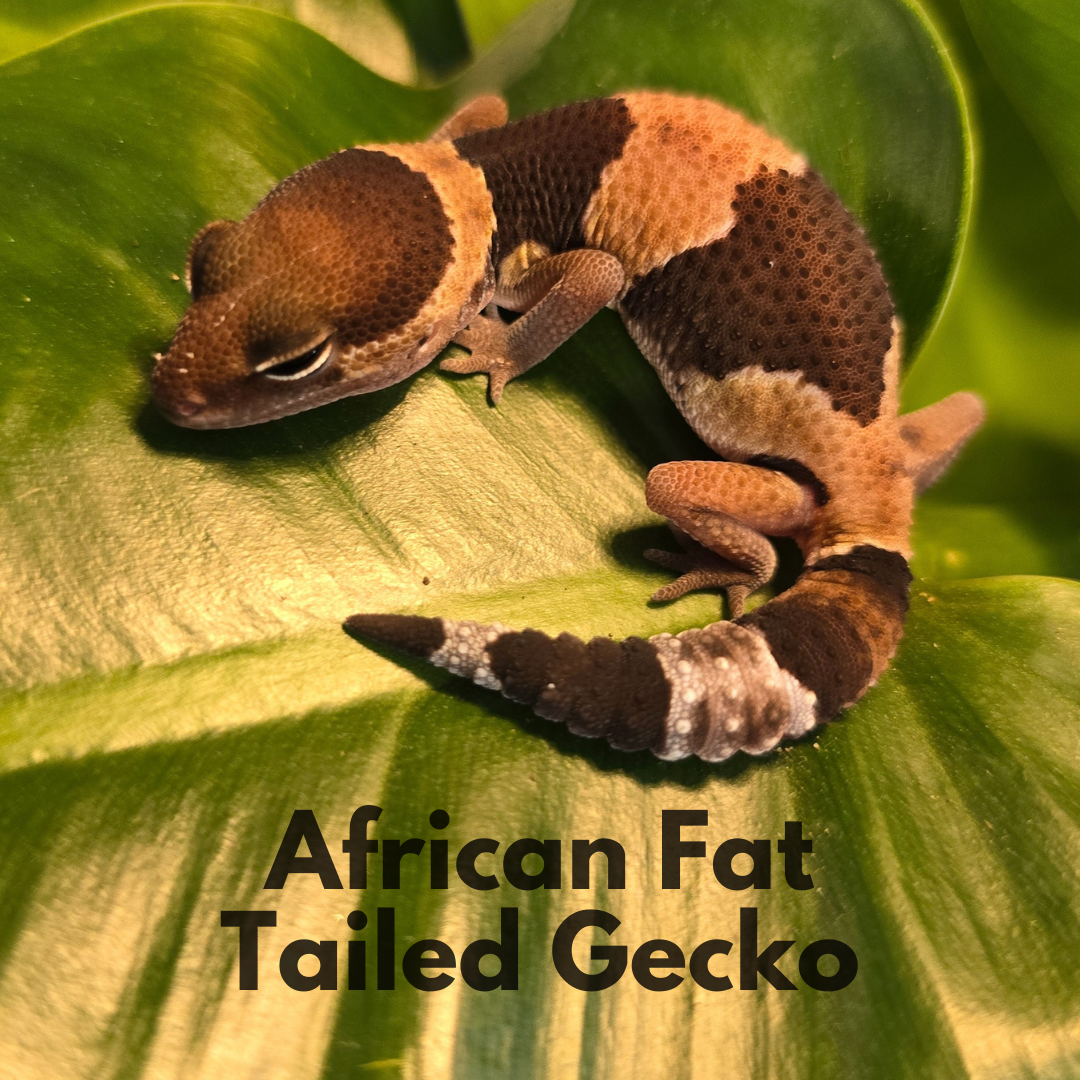
Meet the African Fat Taile Gecko
The African Fat-Tailed Gecko: A Charming Companion for Reptile Lovers
If you’re on the hunt for a calm, fascinating, and utterly beautiful reptile companion, look no further than the African Fat-Tailed Gecko. Often described as the more exotic cousin to the Leopard Gecko, these terrestrial wonders are perfect for collectors, breeders, or anyone looking to add a new dimension to their reptile family. Let’s take a closer look at what makes these geckos so special—and how to care for them like a pro.
A Look at Their Natural Beauty
Native to West Africa—including countries like Nigeria, Cameroon, Senegal, and the Ivory Coast—the African Fat-Tailed Gecko blends into its natural environment with incredible ease. Their striking bands of light caramel and deep chocolate brown provide built-in camouflage, and many feature a bold white dorsal stripe running from head to tail. This, combined with their expressive eyes and plump tails, makes them stand out in any collection.
They’re members of the Eublepharidae family, which means they’ve got moveable eyelids (a rarity in geckos!) and no sticky toe pads—these are ground dwellers, through and through.
Adult African Fat-Tails typically reach 20–25 cm, with males often growing slightly larger than females.
Temperament: Why They Make Great Pets
These geckos are known for their docile temperament. They tolerate handling well, making them a solid choice for beginner reptile keepers and experienced hobbyists alike. Their calm demeanour also makes them great for educational settings or family environments—as long as kids are supervised.
Creating the Perfect Habitat
African Fat-Tailed Geckos don’t need a high-rise tank—they need floor space, not vertical room. Here’s how to set up their enclosure for comfort and health:
Size: For a single gecko, an enclosure of at least 30cm x 45cm is suitable. For a trio (one male, two females), aim for 30cm x 60cm or larger.
Lighting: These geckos are nocturnal, so no fancy lighting is required. However, a natural light cycle helps maintain routine.
Temperature: Keep the warm end of the enclosure at 28–30°C using a heat mat beneath one side of the tank. Avoid overhead heat sources that can dry them out.
Humidity: These geckos require moderate humidity. A humid hide filled with damp sphagnum moss or peat is a must—especially for shedding and egg-laying.
Substrate: Use a moisture-retaining mix like orchid bark, sphagnum moss, or coconut husk. Paper towel or newspaper also work well for easy cleaning.
Water: A shallow, tip-proof dish with fresh water should always be available.
Feeding Your Fat-Tailed Gecko
These insectivores love a varied menu of live feeders:
Staples: Crickets and mealworms.
Occasional Treats: Waxworms or pinkie mice (every 2–3 weeks).
Supplements: Calcium is essential—especially for juveniles and egg-laying females. Dust live insects with calcium and multivitamin powder, and gut-load them 24 hours before feeding.
Feed adults every 2–3 days, and juveniles daily. Provide mealworms in a shallow, escape-proof dish.
Breeding: A Rewarding Experience
Breeding African Fat-Tailed Geckos can be both fascinating and fulfilling. But timing and conditions are key:
Cooling Period: Mimic a dry season by reducing temperatures to 21°C at night and 25°C by day for 4–8 weeks. Reduce feeding during this phase.
Reintroduction: After cooling, resume regular feeding and increase humidity. Introduce the male to the females—courtship often begins immediately.
Egg Laying: Females typically lay clutches of two eggs every two weeks during the season. Provide a moist hide for egg-laying.
Incubation: Transfer eggs to an incubator using moist vermiculite. Incubation temps determine sex:
Below 28.3°C: Mostly females
29–30.6°C: Mixed sexes
Above 31°C: Mostly males
Hatching time: 55–65 days
Sexing Your Gecko
Sexing is best done once the geckos are around 4–6 months old. Males have pre-anal pores in a V-shape and two bulges near the base of the tail (hemipenes). Females lack both.
Never house two males together, as they will fight and may injure or kill each other. A trio with one male and two females works well in spacious enclosures.
Final Thoughts: A Gecko Worth the Effort
African Fat-Tailed Geckos are a lesser-known gem in the reptile world, but once you’ve cared for one, it’s hard not to fall in love. Their unique appearance, gentle nature, and manageable care needs make them a fantastic choice for both keepers and breeders looking for something a little different. With the right setup and attention, your Fat-Tail will thrive—and maybe even start a family of their own.
